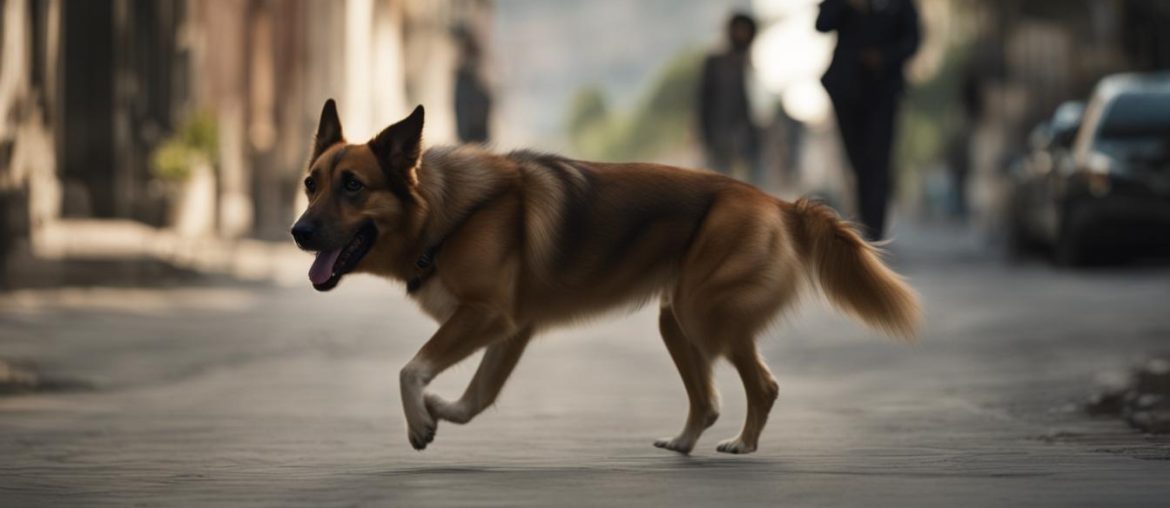If you’ve noticed that your dog is walking sideways, it’s natural to be concerned. This unusual gait can be a sign of underlying health issues that require attention. In this article, I will explore the potential causes, symptoms, diagnosis, and treatment options for dogs walking sideways. It’s important to seek veterinary care to ensure your dog’s well-being and address any medical conditions that may be affecting their gait.
Walking sideways in dogs can be caused by various factors, including bone or joint abnormalities, nutritional deficiencies, hip dysplasia, weakness in the hind end, vestibular disease, inner ear infections, traumatic injuries, seizures, brain tumors, inflammation or infection in the brain, stroke, or sudden changes in gait. A thorough veterinary examination, including physical exams, blood tests, and advanced imaging, may be necessary to diagnose the underlying cause.
Key Takeaways:
- Dogs walking sideways may indicate underlying health issues.
- Causes can include bone or joint abnormalities, nutritional deficiencies, hip dysplasia, and more.
- A veterinary examination is necessary to diagnose the underlying cause.
- Treatment options depend on the specific condition identified.
- Prevention strategies, such as proper training and regular exercise, can help promote optimal gait.
Causes for Crooked Gaits
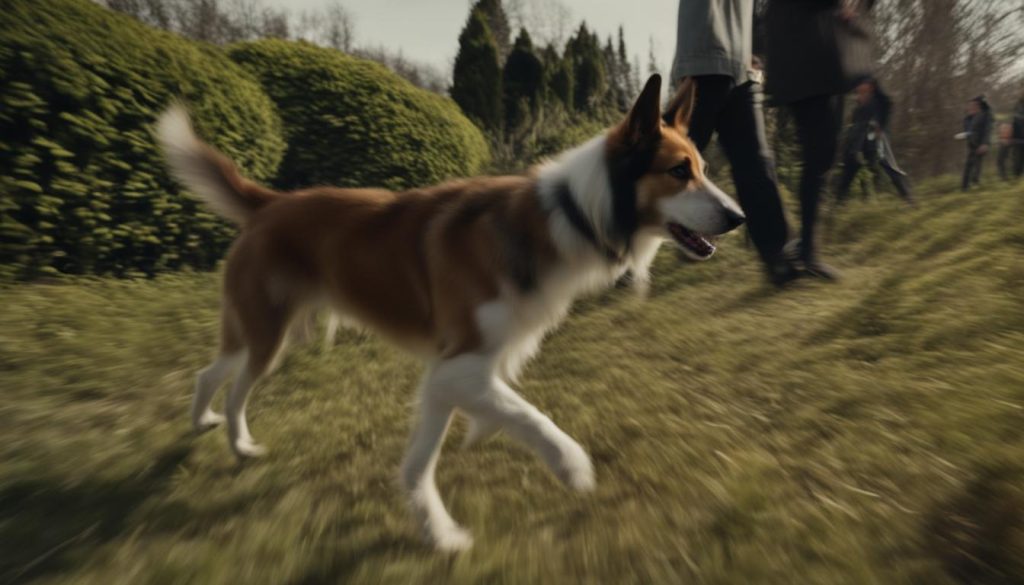
Dogs who walk crooked or sideways can exhibit this unusual gait due to various factors. These causes can include bone abnormalities, joint abnormalities, nutritional deficiencies, hip dysplasia, and hind end weakness.
Bone abnormalities: Some dogs may have inherent bone abnormalities that affect their gait. These abnormalities can be present since puppyhood or develop gradually over time.
Joint abnormalities: Similar to bone abnormalities, joint abnormalities can contribute to a dog’s crooked gait. These abnormalities can interfere with proper joint movement and affect the dog’s overall stability.
Nutritional deficiencies: Inadequate nutrition or deficiencies in certain nutrients can impact a dog’s bone development, leading to abnormal gait patterns. Proper nutrition is crucial for the proper growth and development of a dog’s skeletal system.
Hip dysplasia: This condition involves the abnormal formation of the hip joint, causing discomfort and an altered gait. Dogs with hip dysplasia may exhibit a crooked or sideways walk as they try to compensate for the instability and pain in their hips.
Hind end weakness: Weakness in the hind end, which can result from various factors such as muscle atrophy or nerve damage, can also cause a dog to walk crookedly. When the hind legs are weak, the dog may struggle to maintain a straight gait and end up walking sideways.
Table: Examples of Causes for Crooked Gaits
| Cause | Description |
|---|---|
| Bone abnormalities | Irregularities in bone structure that affect proper movement |
| Joint abnormalities | Anomalies in the joints that impair normal joint function |
| Nutritional deficiencies | Lack of essential nutrients necessary for proper bone development |
| Hip dysplasia | Abnormal formation of the hip joint leading to instability and discomfort |
| Hind end weakness | Weakness in the hind end muscles or nerves affecting gait |
Sudden Changes in How Dog Walks
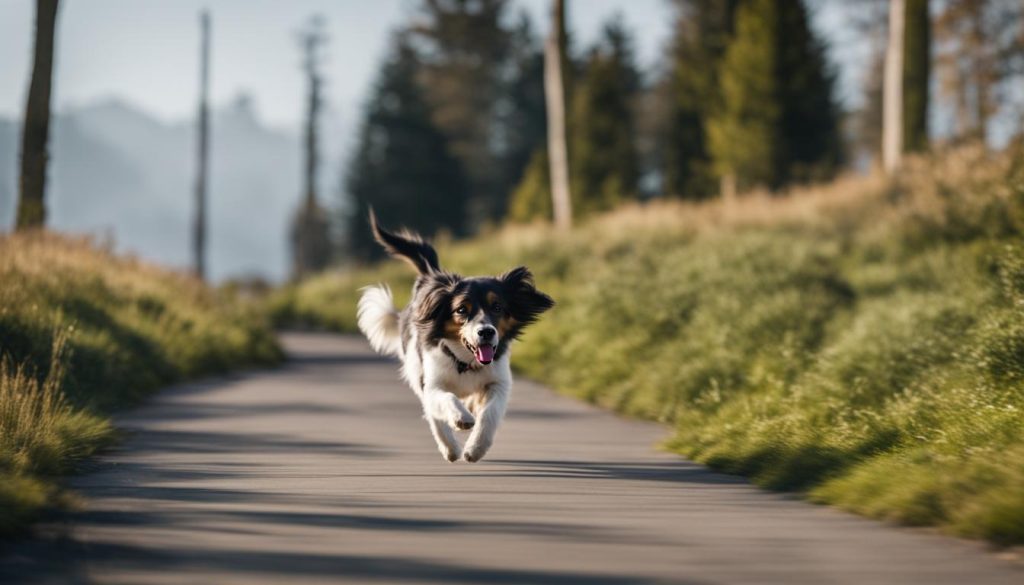
When a dog starts walking crooked or sideways suddenly, it is important to seek veterinary attention. A veterinarian will perform a thorough physical examination, including checking for abnormalities in the legs and joints and assessing reflexes. The ears will also be checked for signs of infection. Blood tests may reveal infections or organ damage that could be causing neurological issues. Additional imaging tests like X-rays, ultrasound, or MRI may be necessary to identify brain tumors, strokes, inflammation, trauma, or infection. Assessing these sudden changes in a dog’s gait can help determine the underlying cause and guide appropriate treatment.
Sudden changes in a dog’s gait can be a sign of various neurological problems. The sudden onset of crooked or sideways walking should not be ignored, as it may indicate a potential medical issue that requires prompt attention. A veterinary visit is essential to properly assess the dog’s condition and determine the appropriate course of action. Physical examination, including reflex assessments, can provide important clues about the dog’s neurological health. Additionally, the ears will be checked for signs of infections. Blood tests can help identify underlying infections or organ damage that may be contributing to the gait abnormalities.
In cases of sudden changes in a dog’s gait, blood tests can be instrumental in diagnosing the underlying cause. These tests can detect infections, organ damage, or other abnormalities that may be affecting the dog’s neurological system. A comprehensive physical exam by a veterinarian is crucial to identify any signs of neurological problems. Additionally, imaging tests such as X-rays, ultrasounds, or MRIs may be necessary to further investigate the dog’s condition. Prompt veterinary attention and proper diagnostic assessments are essential to ensure the dog receives appropriate care.
Veterinary visits are essential when sudden changes in a dog’s gait occur. A thorough physical examination will be conducted to assess the dog’s reflexes and overall neurological health. The veterinarian will also check the dog’s ears for signs of infections that may be contributing to the abnormal gait. Blood tests can provide valuable insights into any underlying neurological problems or infections. Additional imaging tests may be recommended to further evaluate the dog’s condition. Seeking veterinary care and diagnostic assessments are crucial in determining the cause of sudden changes in a dog’s gait and providing appropriate treatment options.
Table: Examples of Diagnostic Tests for Sudden Changes in Dog’s Gait
| Diagnostic Tests | Purpose |
|---|---|
| Physical examination | To assess reflexes and identify any abnormalities in the legs, joints, or ears. |
| Blood tests | To detect infections, organ damage, or abnormalities that may contribute to neurological issues. |
| Imaging tests (X-rays, ultrasound, MRI) | To identify brain tumors, strokes, inflammation, trauma, or infection in the dog’s body. |
Note: The specific tests recommended may vary depending on the individual dog’s symptoms and suspected underlying cause.
Signs of Neurological Problems in Dogs
Dogs walking sideways can be indicative of underlying neurological issues. In addition to sideways walking, there are several other signs that may suggest a neurological problem in dogs. These signs include stumbling, circling, head pressing against walls or objects, dragging feet, paralysis of one or more legs, seizures, sudden blindness, tremors, head tilt, or head shaking. If you notice any of these symptoms, it is crucial to seek veterinary attention promptly to determine the underlying cause and appropriate treatment.
“Stumbling, circling, and head pressing are common signs of neurological problems in dogs. It is essential to address these symptoms as they may indicate a serious condition that requires veterinary care.” – Dr. Amanda Thompson, DVM
Neurological problems can have various causes, including brain tumors, spinal cord injuries, vestibular disease, and infections in the brain. These conditions can affect a dog’s coordination, balance, and overall mobility, leading to abnormal walking patterns, such as walking sideways. It is important for a veterinarian to conduct a thorough examination and potentially perform diagnostic tests, such as blood work and imaging, to accurately diagnose the underlying neurological issue.
Table: Signs of Neurological Problems in Dogs
| Sign | Description |
|---|---|
| Stumbling | Lack of coordination and frequent loss of balance |
| Circling | Repetitive, uncontrollable circling behavior |
| Head Pressing | Pressing the head against walls or objects for prolonged periods |
| Dragging Feet | Lack of proper control over leg movements, resulting in dragging feet |
| Paralysis | Inability to move one or more legs |
| Seizures | Uncontrolled, abnormal electrical activity in the brain, resulting in seizures |
| Blindness | Sudden or progressive loss of vision |
| Tremors | Involuntary shaking or trembling of the body |
| Head Tilt | Constantly tilting the head to one side |
| Head Shaking | Repetitive shaking or jerking of the head |
Early recognition and intervention are crucial when it comes to neurological problems in dogs. Prompt veterinary care can help diagnose the underlying cause and determine the most appropriate treatment plan to manage the condition effectively. If your dog is exhibiting any signs of neurological problems, consult your veterinarian for a comprehensive evaluation and guidance.
Non-Medical Reasons Why Dogs Walk Sideways
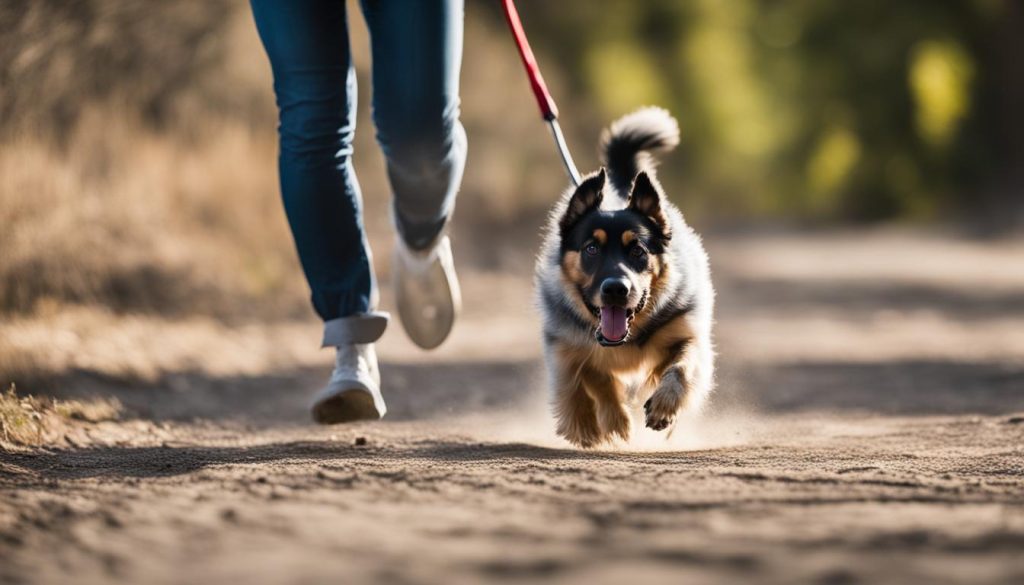
Dogs may walk sideways for non-medical reasons, which can include breed-related traits, puppy growth, dominant side, and collar or harness irritation. It’s important to consider these factors before assuming a medical issue.
Some dogs naturally walk on two legs, especially if they learn it from an older dog during their puppyhood. Breeds like German Shepherds, Cocker Spaniels, Border Collies, Vizslas, Pointers, and Boxers are known to have body structures that may contribute to sideways walking. During puppy growth spurts, dogs may also walk sideways as they adjust to avoid tripping over their own paws.
Dogs have a dominant side, and their gait may appear sideways when the dominant side pushes off the ground with more force. Additionally, collar or harness irritation can cause a dog to walk sideways as they try to relieve discomfort. It’s important to consider these non-medical reasons and consult with a veterinarian if you have concerns about your dog’s gait.
| Non-Medical Reasons for Sideways Walking | Description |
|---|---|
| Breed-Related Traits | Certain breeds have body structures that may contribute to sideways walking |
| Puppy Growth | Dogs may walk sideways during growth spurts to avoid tripping over their own paws |
| Dominant Side | Dogs have a dominant side, and their gait may appear sideways when the dominant side pushes off the ground with more force |
| Collar or Harness Irritation | Discomfort from collar or harness irritation can cause a dog to walk sideways |
Medical Reasons Why Dogs Walk Sideways
When dogs walk sideways, it can be indicative of underlying medical conditions. These conditions may include structural imbalances, nutritional deficiencies, hip dysplasia, vestibular disease, orthopedic issues, anal gland issues, ear infections, and undetected pain. It is important to consider these medical reasons as potential causes for sideways walking in dogs.
Structural imbalances can affect a dog’s gait, causing them to walk sideways. This can be due to abnormalities in bone or joint development, leading to an altered walking pattern. Nutritional deficiencies can also impact a dog’s gait by affecting their muscle strength and coordination. Conditions like hip dysplasia can cause discomfort and influence the way a dog walks, potentially leading to a sideways gait.
Neurological conditions such as vestibular disease can disrupt a dog’s balance and coordination, causing them to walk sideways. Orthopedic issues, including injuries or conditions affecting the bones and joints, can also contribute to abnormal gaits. Anal gland issues and ear infections can cause pain and discomfort, which may result in changes in a dog’s walking pattern. Additionally, undetected pain from other sources can cause dogs to walk sideways as they attempt to alleviate their discomfort.
| Medical Reasons for Sideways Walking in Dogs | Effects on Gait |
|---|---|
| Structural imbalances | Altered walking pattern |
| Nutritional deficiencies | Decreased muscle strength and coordination |
| Hip dysplasia | Discomfort and abnormal gait |
| Vestibular disease | Disrupted balance and coordination |
| Orthopedic issues | Abnormalities in bones and joints |
| Anal gland issues | Pain and discomfort |
| Ear infections | Pain and discomfort |
| Undetected pain | Abnormal walking to alleviate discomfort |
It is essential for dog owners to be aware of these medical reasons for sideways walking and to seek veterinary care if their dog exhibits this behavior. A thorough examination by a veterinarian, including physical assessments, diagnostic tests, and imaging, can help identify the underlying cause and guide appropriate treatment. By addressing the medical issues contributing to sideways walking, pet owners can improve their dog’s mobility and overall well-being.
Veterinary Assessment For Dogs Walking Sideways
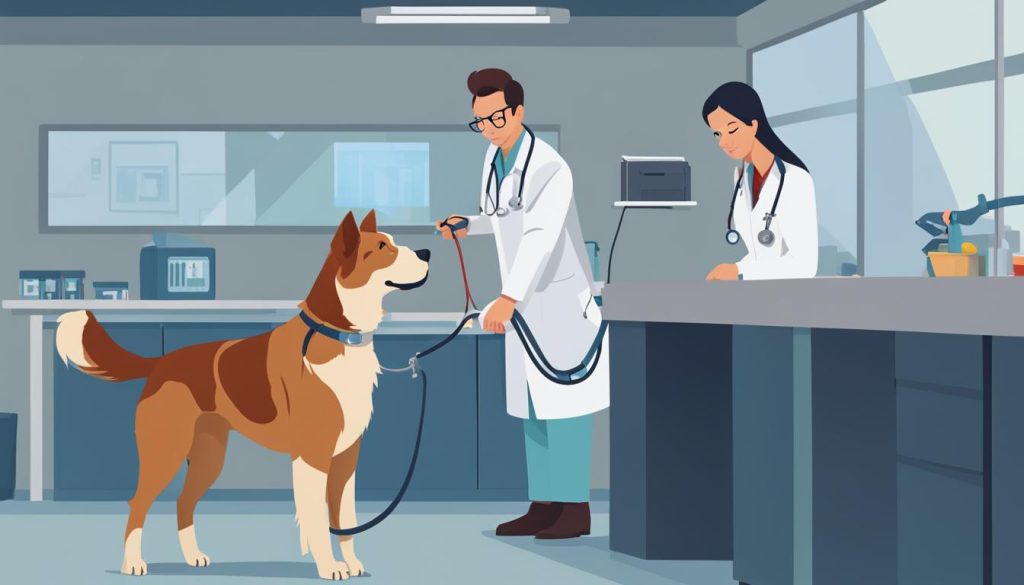
When a dog is walking sideways, a comprehensive veterinary assessment is crucial in order to determine the underlying cause and guide appropriate treatment options. The assessment begins with a thorough physical examination, during which the veterinarian will carefully palpate the legs and joints to check for any abnormalities. Reflexes will also be assessed to gain further insight into the dog’s neurological function. Additionally, an examination of the ears will be conducted to rule out any signs of infection.
To further investigate the sideways walking, blood tests may be performed to check for infections or organ damage that could be causing neurological issues. Advanced imaging techniques such as X-rays, ultrasounds, or MRI scans may also be utilized to identify any structural abnormalities or neurological conditions that may be contributing to the dog’s gait.
The goal of the veterinary assessment is to diagnose the underlying cause of the sideways walking. Once a diagnosis is made, the veterinarian will discuss appropriate treatment options tailored to the specific condition. This may include medication, physical therapy, surgery, or other interventions aimed at addressing the root cause of the sideways walking and improving the overall quality of life for the dog.
Table: Summary of Veterinary Assessment for Dogs Walking Sideways
| Step | Description |
|---|---|
| Physical Examination | A thorough examination of the dog’s legs, joints, reflexes, and ears to assess for any abnormalities or signs of infection. |
| Blood Tests | Tests to check for infections or organ damage that may be causing neurological issues. |
| Advanced Imaging | Techniques such as X-rays, ultrasounds, or MRI scans to identify structural abnormalities or neurological conditions. |
| Diagnosis | Based on the findings from the assessment, a diagnosis will be made to determine the underlying cause of the sideways walking. |
| Treatment Options | Appropriate treatment options will be discussed and tailored to the specific condition, aiming to improve the dog’s mobility and overall quality of life. |
Prevention Strategies
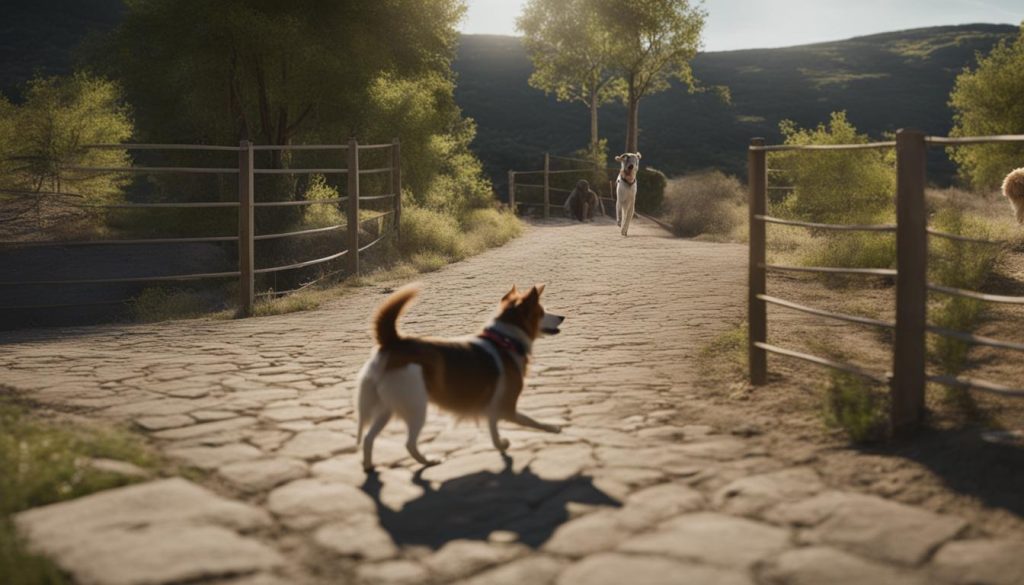
Prevention strategies play a crucial role in maintaining your dog’s overall health and promoting optimal gait. By incorporating these strategies into your dog’s routine, you can help prevent potential issues and support their mobility and well-being.
1. Proper Training: Training your dog to walk with balanced and coordinated movement patterns can help improve their gait. Focus on teaching them to distribute their weight evenly and move smoothly.
2. Regular Exercise: Regular exercise is essential for strengthening your dog’s muscles and promoting joint health. Provide opportunities for physical activity through daily walks, playtime, and age-appropriate exercises.
3. Proper Diet: A nutritious diet is crucial for supporting your dog’s bone and muscle development. Ensure they receive a well-balanced diet that meets their nutritional needs and supports their overall health.
4. Consistent Routine: Establishing a consistent routine can help your dog maintain a stable gait. Stick to regular feeding schedules, exercise routines, and veterinary check-ups to identify and address any potential issues early on.
5. Positive Reinforcement: Encourage your dog to maintain proper gait by using positive reinforcement techniques. Reward them for walking with a balanced stride and discourage behaviors that may contribute to sideways walking.
Table: Summary of Prevention Strategies
| Prevention Strategies | Description |
|---|---|
| Proper Training | Teach your dog balanced and coordinated movement patterns. |
| Regular Exercise | Strengthen muscles and promote joint health through physical activity. |
| Proper Diet | Provide a nutritious diet to support healthy bone and muscle development. |
| Consistent Routine | Establish a stable routine, including regular veterinary check-ups. |
| Positive Reinforcement | Reward proper gait and discourage behaviors that contribute to sideways walking. |
Implementing these prevention strategies can contribute to your dog’s overall health and well-being. However, it is important to note that not all cases of sideways walking can be prevented, as some may be due to underlying medical conditions. Regular veterinary care and prompt attention to any changes in your dog’s gait are essential for early detection and appropriate treatment.
Frequently Asked Questions
As a professional copywriting journalist, I often receive questions about dogs walking sideways. In this section, I will address some of the most frequently asked questions related to this topic. If your senior dog is walking sideways, your dog is walking sideways with hind legs, or you have noticed your dog twisting their body while walking, keep reading for insights and information. I will also cover sudden wobbliness in dogs and the potential causes behind these behaviors.
Why is my senior dog walking sideways?
Senior dogs may begin walking sideways due to age-related muscle weakness, arthritis, or neurological conditions. These issues can affect their balance and coordination, causing them to move in a crooked manner. If you’re noticing this behavior in your senior dog, it is recommended to consult with a veterinarian for a comprehensive assessment and appropriate management strategies.
What causes an old dog to walk sideways with back legs?
An old dog walking sideways with their back legs may be experiencing age-related muscle weakness, arthritis, nerve damage, or neurological disorders. These conditions can impact the dog’s ability to walk normally and may require veterinary intervention. A thorough examination and diagnostic tests can help determine the underlying cause and guide treatment options for your dog.
Why does my dog twist their body when walking?
When a dog twists their body while walking, it could be a result of an injury, abnormal body structure, or a neurological issue. Twisting can be a compensatory movement to alleviate pain or discomfort. It is essential to have your dog evaluated by a veterinarian to identify the underlying cause and develop an appropriate treatment plan.
What can cause a dog to walk sideways and fall down?
Dogs walking sideways and falling down may be experiencing neurological conditions, spinal cord injuries, vestibular disease, or musculoskeletal issues. These health concerns can significantly impact their mobility and balance, leading to falls. If your dog is exhibiting these symptoms, it is crucial to seek prompt veterinary attention for a thorough evaluation and appropriate care.
Why is my dog suddenly wobbly?
Sudden wobbliness in dogs can occur due to various factors such as vestibular disease, spinal cord injuries, intoxication, or certain medications. It is essential to consult with a veterinarian to determine the underlying cause and receive appropriate guidance on diagnosis and treatment options for your dog.
I hope these answers provide you with valuable insights into the questions surrounding dogs walking sideways. Remember, seeking veterinary care and guidance is essential in addressing any concerns about your dog’s health and mobility.
Wrapping Up
Dogs walking sideways can be a cause for concern as it may indicate underlying health issues. If your dog displays this behavior, it is important to seek veterinary care to diagnose and address any medical conditions that may be affecting their gait. Early detection and treatment can help improve your dog’s quality of life.
Veterinary care plays a crucial role in identifying the cause of sideways walking in dogs. Through a thorough physical examination and diagnostic tests, veterinarians can determine the underlying health concerns. They may recommend blood tests, X-rays, ultrasounds, or MRI scans to assess bone structure, check for infections or organ damage, and identify any neurological issues.
Prevention strategies are also essential in promoting optimal gait and preventing potential issues. Proper training, regular exercise, a balanced diet, consistent routines, and positive reinforcement can all contribute to a dog’s overall health and mobility. By implementing these strategies, you can help ensure your dog enjoys a healthy and active lifestyle.
To summarize, dog walking sideways should not be ignored. It is important to prioritize your dog’s well-being by seeking veterinary care, identifying any underlying health concerns, and implementing preventive measures. By taking proactive steps and providing appropriate care, you can help your dog maintain healthy mobility and enhance their overall quality of life.
FAQ
Why is my senior dog walking sideways? Should I be worried?
Walking sideways in senior dogs can be due to age-related muscle weakness, arthritis, or neurological conditions. It may be necessary for the dog to undergo a veterinary assessment to determine the underlying cause.
What causes an old dog to walk sideways with back legs?
Age-related muscle weakness, arthritis, nerve damage, or neurological disorders can cause an old dog to walk sideways with their back legs. A veterinarian can help diagnose and manage these conditions.
Why does my dog twist their body when walking?
Twisting the body while walking can be a result of an injury, abnormal body structure, or a neurological issue. A thorough veterinary examination can help identify the cause.
What can cause a dog to walk sideways and fall down?
Neurological conditions, spinal cord injuries, vestibular disease, or musculoskeletal issues can cause a dog to walk sideways and fall down. Prompt veterinary attention is crucial.
Why is my dog suddenly wobbly?
Sudden wobbliness in dogs can be caused by various factors such as vestibular disease, spinal cord injuries, intoxication, or certain medications. It is important to seek veterinary advice to determine the cause and appropriate treatment.


